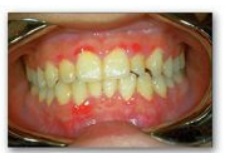Ascorbic Acid (Vitamin C)
| Home | | Biochemistry |Chapter: Biochemistry : Vitamins
The active form of vitamin C is ascorbic acid .
ASCORBIC ACID (VITAMIN C)
The active form of
vitamin C is ascorbic acid (Figure 28.8). The main function of ascorbate is as
a reducing agent in several different reactions. Vitamin C has a
well-documented role as a coenzyme in hydroxylation reactions (for example,
hydroxylation of prolyl and lysyl residues of collagen;). Vitamin C is,
therefore, required for the maintenance of normal connective tissue as well as
for wound healing. Vitamin C also reduces ferric iron to the ferrous form,
thereby facilitating the absorption of dietary iron from the intestine.

Figure 28.8 Structure of ascorbic acid.
A. Deficiency of ascorbic acid
A deficiency of
ascorbic acid results in scurvy, a disease characterized by sore and spongy
gums, loose teeth, fragile blood vessels, swollen joints, fatigue, and a
microcytic anemia caused by decreased absorption of iron (Figure 28.9). Many of
the deficiency symptoms can be explained by a deficiency in the hydroxylation
of collagen, resulting in defective connective tissue.

Figure 28.9 Structures of vitamin B6 and the antituberculosis drug isoniazid.
B. Prevention of chronic disease
Vitamin C is one of a group of nutrients that includes vitamin E and β-carotene, which are known as antioxidants. [Note: Ascorbate regenerates the functional, reduced form of vitamin E.] Consumption of diets rich in these compounds is associated with a decreased incidence of some chronic diseases, such as coronary heart disease and certain cancers. However, clinical trials involving supplementation with the isolated antioxidants have failed to demonstrate any convincing beneficial effects.
